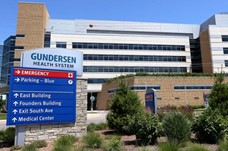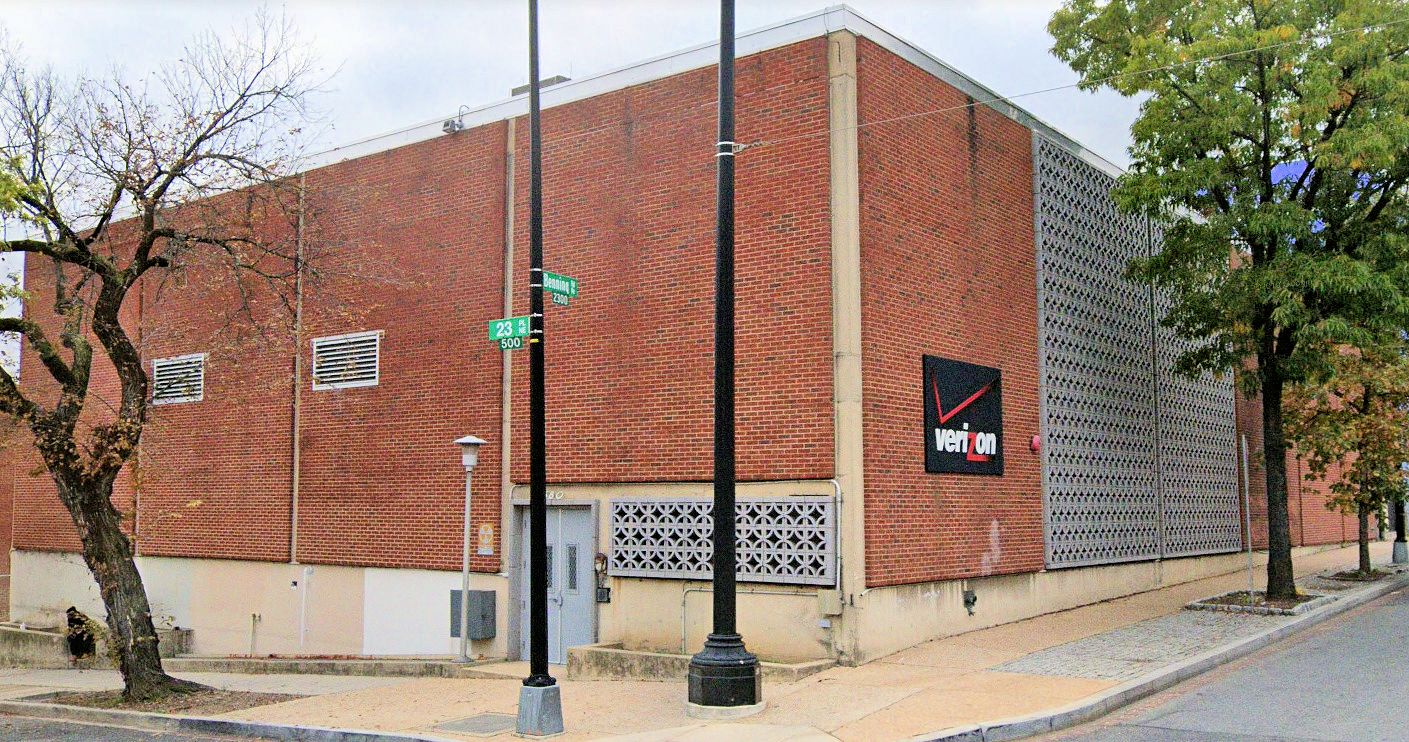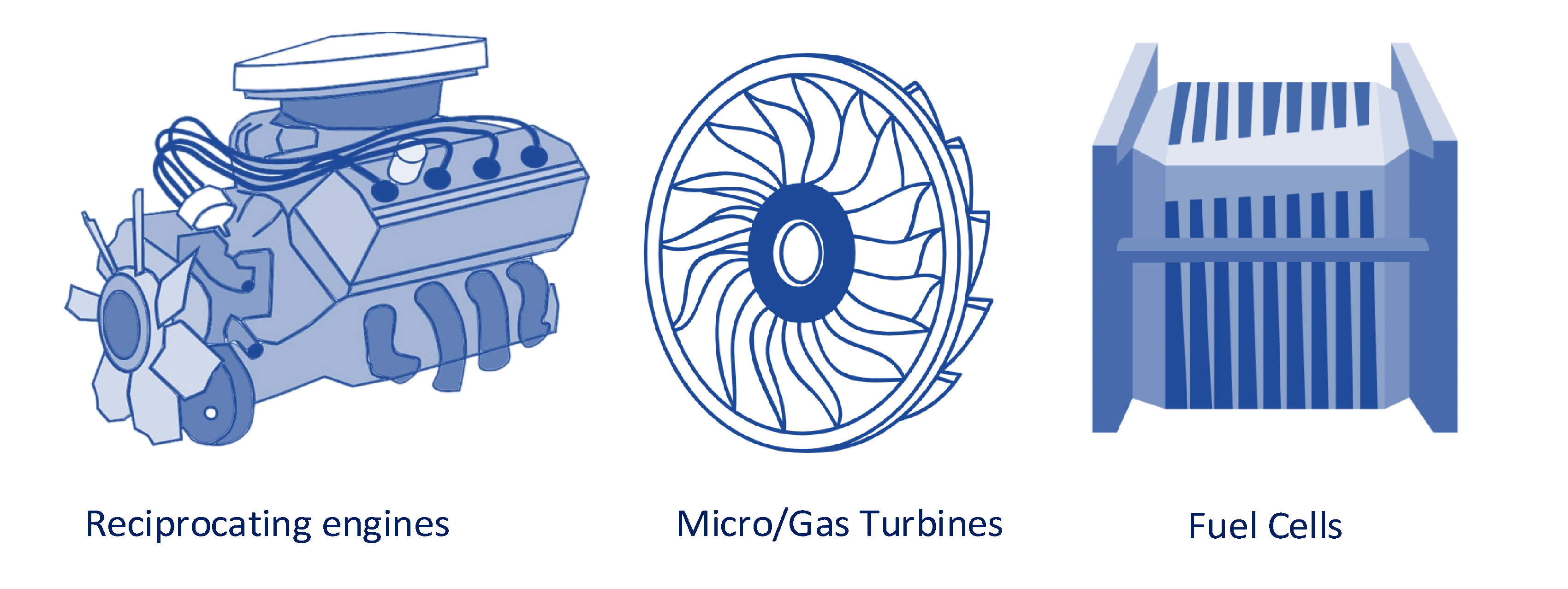
The Right CHP Technology for your Building
Introduction
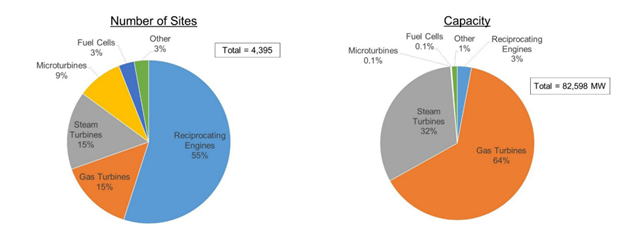
CHP installations in the United States.
According to the U.S. Department of Energy, reciprocating engines account for 55%, gas/micro turbines 24%, and fuel cells only 3% of the total number of sites in the US. But what were the factors that led to the choice of one technology over the other? This article explains the characteristics, advantages and disadvantages, and typical applications of the three CHP technology to help readers select the right one for their project.
Choosing the right CHP technology is key to efficient operation, maximum return, and shortest payback period for your application. Understanding the performance, dynamic response, and other operational characteristics of each technology will ultimately help you select the optimum equipment/system.
Working Concept of CHP Technologies
It starts with understanding the engineering concept behind the technology. Knowing the process flow and how energy is generated, is essential to putting the pieces together. So, here’s a quick an easy way to wrap your head around each technology.
| CHP Technology | Summary | Schematic |
| RICE | RICE CHP operate like a vehicle engine, where fuel and oxygen react in a piston-cylinder mechanism connected to a crank shaft that in turn rotates inside an alternator to generate power with thermal energy as the byproduct. (Learn more here) |  |
| Gas/Micro Turbines | In turbines the high-pressure combustion process happens in a constant volume chamber and the combustion products pass through a multi-blade turbine at very high flow velocity to turn a shaft that in turn produces both alternating electricity and heat. (Learn more here) | 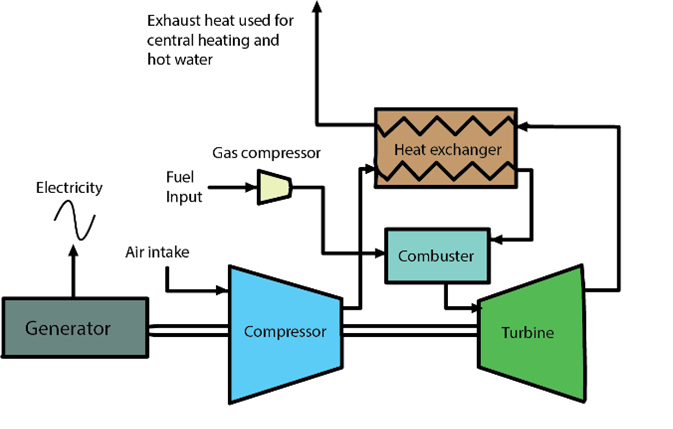 |
| Fuel Cells | Unlike, RICE and Turbines, Fuel Cell CHPs do not have any moving parts. The production of Electricity and Heat happens through an electrochemical process similar to batteries, but minus the reverse cycle of charging. (Learn more here) | 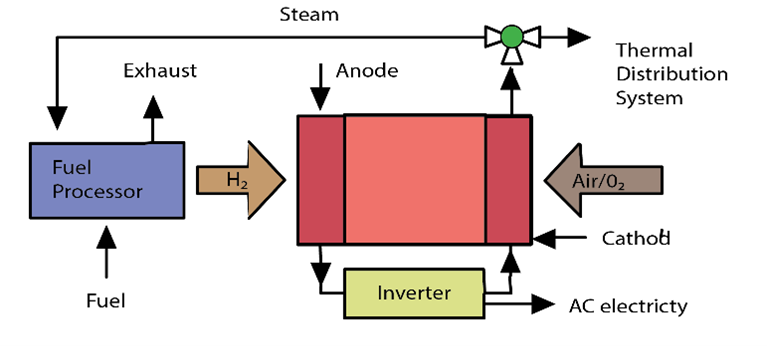 |
Comparison between CHP Technologies
Comparing all three CHP Technologies, side by side, helps you get the picture very quick. The table below compares based on the main factors affecting your decision in selecting the right CHP technology for your project.
| Characteristic | Reciprocating Engine | Gas/Micro Turbine | Fuel Cell |
| Size range | 5 kW – 10 MW | 30 kW – 300 MW | 5 kW – 2.8 MW |
| Electric efficiency | 30 – 42 % | 24 – 36% | 38 – 42% |
| Overall CHP Efficiency | 77 – 83 % | 65 – 71% | 62 – 75% |
| Power to heat ratio | 0.6 – 1.2 | 0.6 – 1.0 | 1.3 – 1.6 |
| Thermal Output (Btu/kWh) | 2,900 – 6100 | 3,400 – 6,000 | 2,200 – 2,600 |
| Total Installed Cost($/kWh) | $1400 – $2900 | $1,300 – $3,300 | $4,600 – $10,000 |
| O&M Cost (¢/kWh) | 0.9 – 1.2 | 0.9 – 1.3 | 3.6 – 4.5 |
| Load Following Capability | Highest | Lower | Lowest |
| Emissions | Highest | Lower | Lowest |
| Noise Level | Highest | Lower | Lowest |
| Gas Pressure | Lower | Highest | Lowest |
| Fuel Sensitivity | Lower | Lowest | Highest |
| Heat Quality | Lower | Highest | Lowest |
| Power Quality | High | Low | High |
| Availability | Lowest | Lower | Highest |
(Source: EPA)
When it comes to making decision on the CHP technology to use, it will mainly depend on the following constraints:
- The building coincident electric and heat load profiles.
- Utility Gas connection.
- Capital and operational costs.
- Emissions and Noise levels.
If you have some preliminary data available from your project, you can quickly start leaning towards one technology over the other.For example, if your building heating load is higher than the electric by a good amount, you might be leaning towards Micro or Gas Turbines, due to their high thermal output. If you’re more concerned about noise levels and your building electric and heating load profiles are fairly close, you might be leaning towards Fuel Cells.
Applications of each CHP Technology
| RICE | Gas/Micro Turbines | Fuel Cells | |
| Typical Building Types | Universities, hospitals, wastewater treatment plants, commercial buildings, and multi-family dwellings. | Hotels, nursing homes, health clubs, public buildings, food processing & manufacturing, and college or university campuses | Colleges and universities, hospitals, nursing homes, and lodging |
| Example Project Profile |
Gundersen Health System
Location: Onalaska Campus, Wisconsin Annual Energy Savings: $400,000 Simple Payback: Less than 9 Years |
University of Illinois at Chicago
Location: Chicago, Illinois Equipment: Gas Turbines Capacity: 21 MW Fuel: Natural Gas Heat Recovery: Heating and Cooling Total Project Cost: $36 Million Annual Energy Savings: $5 to $7 Million Simple Payback: Less than 7 Years |
Verizon Central Office
Location: Garden City, New York Equipment: PAFC Fuel Cells Capacity: 1.4 MW Fuel: Natural Gas Heat Recovery: Heating and Cooling Total Project Cost: $11.8 Million Annual Energy Savings: $0.25 – $0.5 Million Simple Payback: Less than 10 Years
|
(Source: erc.uic.edu & energy.gov)
In conclusion
The first step in selecting the right CHP Technology is knowing the various restrictions of your building. Then, what’s left is exercising the long-term savings of each target CHP technology on your building through the lens of operating efficiency, return on investment, payback period, and emissions. This requires careful modeling of the various system configurations, dynamic response, and part-load performance.
If you’re looking to evaluate your CHP microgrid project, you must try our software, CogenS™. CogenS™ will help you design your CHP project in a fraction of the time spent on multiple screening, modeling, simulation, optimization and design tools. We managed to pull off an accurate design procedure that eases the process with preset automatically populated defaults, and simulation and modeling functions that does most of the work for you.

